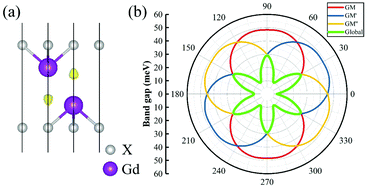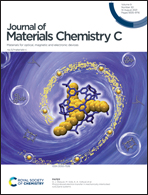A high-temperature quantum anomalous Hall effect in electride gadolinium monohalides†
Abstract
Electrides, with interstitial electrons loosely trapped in lattice voids behaving as anions, are favorable for achieving band inversions required for topological phases. In this paper, we predict that the quantum anomalous Hall effect (QAHE) with either in-plane or out-of-plane magnetization can be realized in gadolinium monohalides GdX (X = F, Cl, Br, and I), a new class of two-dimensional electrides. The spin polarization of interstitial electrons contributes to the ferromagnetism and stabilizes the crystal structure. Our calculations demonstrate that monolayer GdX are intrinsic QAHE insulators with in-plane magnetization and have band gaps up to 48.6 meV. Furthermore, we show that an external magnetic field can be used to realize the QAHE with out-of-plane magnetization, such as in monolayer GdI with the largest band gap of 84.3 meV among all halides considered in this work. The estimated Curie temperatures of GdX are about 510–650 K, which is above room temperature. Our studies reveal that the GdX electrides provide an attractive platform for exploring tunable, large-gap QAHE and open up opportunities to design new high-temperature quantum devices.



 Please wait while we load your content...
Please wait while we load your content...